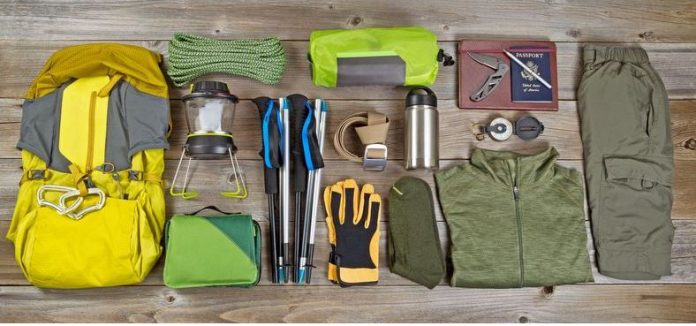The last thing you want to happen when you’re 20 miles into the woods is to find your sleeping bag is not warm enough. You will be facing a very long and unrestful night which can ruin your spirits and sap your strength for the next day.
So how do you make sure you’ve selected the best bag for your needs? There are several aspects to consider:
GOOSE DOWN or SYNTHETIC?
There are pros and cons to most of the options available in sleeping bags.
Goose down is very warm. It is lightweight to carry and can be easily compressed for travel and quickly regain form when shaken out.
It is by far a better choice for backpackers who intend to carry the bag with them for extended trips because of the lighter weight and smaller packing.
However, goose down is also more expensive and losses its insulating properties when wet – a consideration if sleeping outdoors or traveling in inclement weather.
Synthetic filled bags are cheaper than goose down and retain their warmth even in wet conditions. They dry faster than down and are a good choice if traveling by boat or sleeping outdoors on the ground.
However, synthetic bags are heavier and larger which can be a downside if you are hiking long distances with the bag.
For the average family camper, synthetic bags are the least expensive and least affected by wet conditions. If traveling by car to a campground the size and weight of a synthetic bag should not be a problem.
RECTANGLE, TAPERED, or MUMMY BAG?
As with the insulating materials, the shape of the bag you choose will depend on your specific needs with pros and cons for each type.
Rectangle bags are most similar to bed sleeping and most familiar to the average user. They permit room for movement and you can easily zip two bags together for shared sleeping.
However, rectangle bags are the biggest and not the best option for carrying on extended hikes.
Tapered bags are somewhat narrower towards the feet area of the sleeping bag. This shape provides less freedom of movement but more warmth because of the restricted space.
Mummy bags are the smallest and lightest to carry. They are very snug to the body (as the name suggests) with a hood that can be fitted around the head to conserve the greatest amount of body heat.
While the average user may find the mummy bag uncomfortable to sleep in because of the restriction they are the best choice for cold weather camping and long hikes because of their warmth and small size.
WHICH TEMPERATURE RATING?
Sleeping bags will list the coldest temperature they are suitable for sleeping in. Depending on if you are camping in the summer or colder months you will need to choose a bag accordingly.
Also, take into consideration if you are normally cold or hot when sleeping and make the adjustments.
In most cases, it is recommended to choose a warmer bag since you can always open it for venting if it is too warm. The temperature rating is based on using a sleeping pad under the sleeping bag which conserves body heat from the ground.
ADDITIONS:
If you frequently camp out you may want to consider a liner for your bag which will increase its warmth and can be washed separately, saving your sleeping bag from extra wear and tear.
You can also purchase sleeping bag covers. Some of these can substitute for a warm weather sleeping bag and can extend an all-season bag into a cold-weather bag by increasing the warmth.
They can also provide extra protection from wet conditions and are a good choice for protecting goose down sleeping bags.
How comfortable you are when you sleep will drastically affect your enjoyment of a camping or hiking trip. Saving five or ten dollars at the expense of a good night’s sleep will not seem like a good idea when you are tired and cold out in the woods, so choose wisely.

